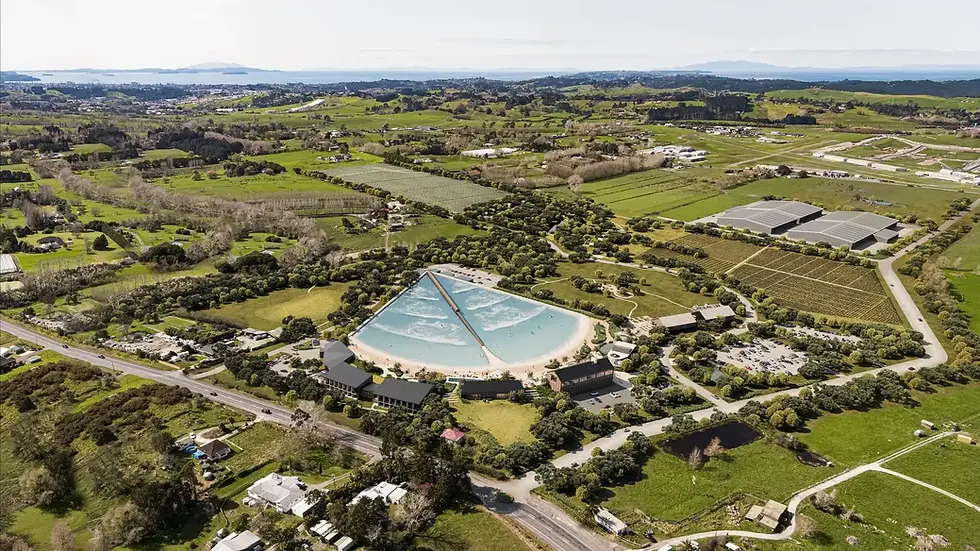Inside Auckland’s Surf City: What to Expect from NZ’s Heated Lagoon (2027)
- Team MEGA

- Aug 28
- 3 min read
A Surf Park in Dairy Flat
In a few years’ time, you’ll be able to drive north out of Auckland and, instead of just seeing paddocks and lifestyle blocks, you’ll come across something no one would have believed ten years ago – a heated, artificial surfing lagoon in the middle of Dairy Flat. Surf City, when it opens (expected around 2027) will be the first of its kind in New Zealand, and the only one in the world with heated water.

For learners, surf schools, or people who only have a spare hour after work, waiting for the right swell, tide, and wind isn’t practical. With a surf park, you press a button, and waves are on tap.
The Build and the Brains Behind It
The project is backed by investors who’ve partnered with Wavegarden, a Spanish company known for their “Cove” technology. This is the system that’s been rolled out across Europe, the UK, and now Virginia Beach in the U.S. It pumps out up to 1000 waves per hour, all consistent, all customisable.
But Auckland’s version is pushing the boundaries further:
Heated water – so you can surf year-round without worrying about 3mm wetsuits.
Solar farm – designed to offset a chunk of the power demand.
On-site surf club, accommodation, food spots, and even a data centre – making it more of a surf resort than just a pool.
The lagoon itself will be about the size of four rugby fields. That means multiple breaks at once – small mellow rollers on one side for learners, steeper faces on the other for people chasing turns, airs, or barrels.

What a Day There Might Look Like
Picture this. You finish work in Auckland city at 5.30, sit in the motorway crawl for half an hour, then pull into Dairy Flat just after six. Instead of hoping the tide’s right at Orewa, you book a slot online and paddle out into 20°C heated water with perfectly spaced sets.
For beginners, there’ll be foamies waiting, surf coaches in rashies, and mellow waves designed to make standing up as easy as possible. For groms, there’ll be punchier sets to practise turns without waiting half an hour between waves. And for pros or weekend warriors, you can book the “beast mode” setting – fast, hollow waves that mimic the best beach breaks in the world.
In one 90-minute session you could catch 20–30 decent waves. That’s more than most surfers get in a whole day at Piha when the crowds are out.
What It Means for Northland and Auckland
The project isn’t just about surfing. The developers are selling it as a tourism hub and job creator.
Hundreds of construction jobs during the build.
Permanent roles once it’s running: coaches, lifeguards, hospitality, maintenance, event staff.
A knock-on effect for local businesses – accommodation, food, and retail.
Of course, not everyone’s stoked. Locals worry about traffic congestion on an already busy Dairy Flat motorway corridor. There are environmental questions too: how much water does a lagoon that size actually use? Will the solar panels genuinely offset the massive pumps needed to run the Wavegarden Cove?
But there’s no denying the drawcard. International surf tourism is worth around $65 billion globally and growing.
If Auckland nails this, people will travel here not just for the beaches, but also for the consistency of Surf City.
Either way, we'll be there with bells on on opening day!
Team MEGA








Comments